From January 21, 2018 to February 28, 2018
Ibrahim El Haddad’s immediate environment plays a pivotal role in the direction of his new work. He revels in the spontaneous acts of the Egyptian people that respond to the disorder of the city; such as fashioning furniture out of discarded wood, the creation of new routes around the Egyptian wasteland, or the trail of air-conditioning tubes out of the fifth floor window to water the trees below. It is this inherent creativity of the Cairenes as they improvise with their urban landscape which he refers to as the art of the everyday, and are the adventures of the street that he seeks to retell.
Playful structures and found objects are the defining features of his current work, whilst vivid colours pay homage to the vibrancy of the place where he grew up; to the neon lights, the personal embellishments of shops and the kitsch interiors of taxis. Toeing the line between painting and sculpture, he mounts household trinkets and robabikeya onto wooden boards discarded from the rooftops of Cairo. We are reminded of the kiosk owner on the sidewalk whose leftover container is refashioned as a chair. Just as the cities inhabitants improvise with their metropolitan playground, El Haddad imitates these daily acts by repurposing the debris of the streets into his lively constructions. In the selection process for his objects, he relinquishes some control, and allows the objects to choose him as they appear at certain moments and present themselves to him. This almost magical dimension to his work places emphasis on being open to interacting with your surroundings and the affective capacity of everyday matter. By reusing found objects in new ways El Haddad invites us to discover new ways of seeing and to marvel at the commonplace creativity happening on the pavements.
Through his work El Haddad challenges the conception of art as separate from the rest of social life. His references to African art - to a culture where art was deeply woven into the very fabric of society, and never intended to be ‘art’ in the institutional sense - prompts us to reflect on the routine appearances of ‘art’ in our own surroundings and explore what is so often overlooked. Paradoxically, in order to highlight art in the sphere of everyday production, EL Haddad knowingly adheres to the art world’s exclusive conception of art and creates art for the gallery setting. This contradiction, however, can be seen to disrupt institutionally ascribed notions of art from the inside by taking advantage of the privileged platform that the gallery offers. In this way, by presenting in the gallery, he reminds us to look outside of the gallery, and take pleasure in the simple things.
Ibrahim El Haddad
Born in 1963 in the center of Cairo, Ibrahim El Haddad graduated from Cairo’s College of Fine Art in 1990. A year later he moved to Switzerland on a scholarship, only returning to Cairo two weeks before the 2011 revolution. El Haddad has participated in various group and solo exhibitions worldwide.
Katie McDougall
أشياء بسيطة - إبراهيم الحداد
تلعب بيئة إبراهيم الحداد دورًا محوريًا في فى تشكيل أعماله الجديدة. ينغمس الحداد في تصرفات الشعب المصري التلقائية والتي بدورها تعكس استجابة للاضطراب في المدينة؛ مثل صناعة الأثاث من الخشب المهمل، وإنشاء طرق جديدة حول الأماكن المهجورة، أو منظر أنابيب تكييف الهواء من نافذة الطابق الخامس لري الشجر في الاسفل. هذا الإبداع الكامن في سكان القاهرة، وارتجالهم المستمر لمواكبة المشهد الحضري الذي يشير إليه الحداد بـ"الفن اليومي"، وهى مغامرات الشارع التي يسعى إلى إعادة رويها
إن السمة المميزة لعمله الحالي هى التركيبات المليئة بالحركة والأغراض الموجودة في الشارع المصري، في حين يشيد الحداد بحيوية المكان الذي نشأ به وأضواء النيون والزينة الشخصية في المحلات التجارية والإكسسوارات الرديئة في سيارات الأجرة وألوانها المشرقة. ثَبّت الحداد الاكسسوارات المنزلية البسيطة والروبابيكيا التى تم التخلص منها على أسطح المنازل بالقاهرة على لوحات خشبية، متخطيًا بذلك حدود الرسم والنحت، فهو يذكرنا بصاحب الكشك على الرصيف والذي حولوا حاوياته الفارغة إلى كرسي. يحاكى الحداد هذه الأعمال اليومية من خلال إعادة استخدام مخلفات الشوارع في تركيباته الحيوية مثلما يرتجل سكان المدينة في المشهد الحضري
فى عملية إختياره للأغراض الموجودة فى الشارع، يتخلى إبراهيم الحداد عن جزء من خططه، ويسمح للأغراض بأنها تختاره هي الأخرى عن طريق ظهورها فى أوقات معينة وتقديم نفسها له. وتقريبا هذا البعد السحري لعمله يؤكد الانفتاح على التفاعل مع البيئة المحيطة والقدرة العاطفية للأشياء التي نقابلها بشكل يومي، فيدعونا الحداد إلى اكتشاف طرق حديثة لرؤية الأشياء والإندهاش بالإبداع الذى يتواجد على الأرصفة من خلال إعاده إستخدام الأغراض الموجودة فى الشارع بطرق إبداعية
يتحدى الحداد من خلال عمله مفهوم الفن باعتباره منفصلا عن بقية الحياة الاجتماعية. فحين يشير إلى الفن الأفريقي، فهو يقصد به الثقافة التي نُسج الفن فيها بعمق في بنية المجتمع، ولم يقصد به أبدا أن يكون "فنًا" بالمعنى المؤسسي. تدفعنا هذه الإشارة إلى التفكير في المظاهر الروتينية "للفن" في محيطنا الخاص واستكشاف ما يتم تجاهله في كثير من الأحيان. وبشكل متناقض، إلتزم الحداد بالمفهوم العالمي لحصرية الفن من أجل تسليط الضوء عليه في مجال الإنتاج اليومي، حيث يقوم بصناعة فن يتم عرضه فى المعارض. ومع ذلك، يمكن أن ينظر إلى هذا التناقض كوسيلة لتعطيل مفاهيم مؤسسية الفن من الداخل من خلال الاستفادة من منصة متميزة وهو ما تقدمه مساحة المعرض. وبهذه الطريقة، يذكرنا أن ننظر خارج جدران المعرض ونستمتع بالأشياء البسيطة
إبراهيم الحداد
ولِدَ في 1963 في قلب القاهرة، وتخرج من كلية الفنون الجميلة– جامعة حلوان. حصل على منحة في سويسرا بعد تخرجه بعام ثم عاد إلى مصر قبل انطلاق الثورة في 2011 باسبوعين. شارك في العديد من المعارض الدولية سواء بشكل بشخصه أو من خلال مجموعة
كاتي مكدوغال





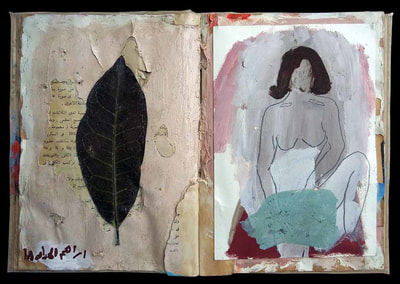


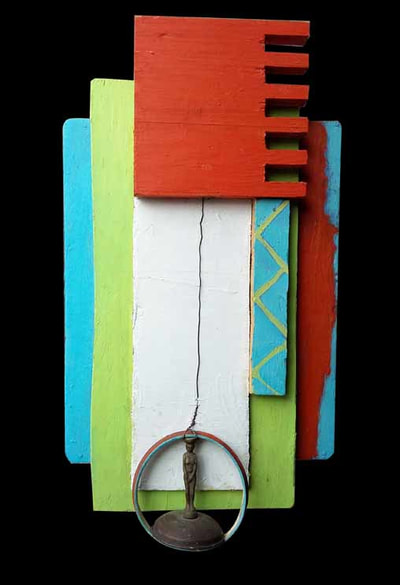











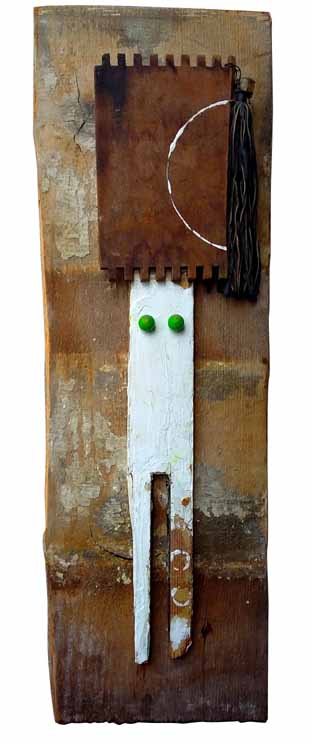








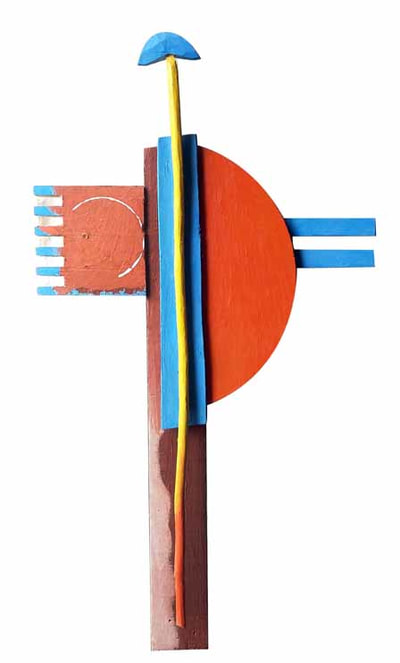

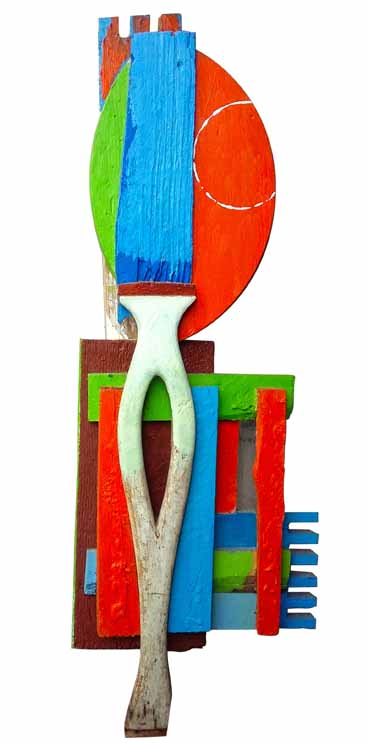






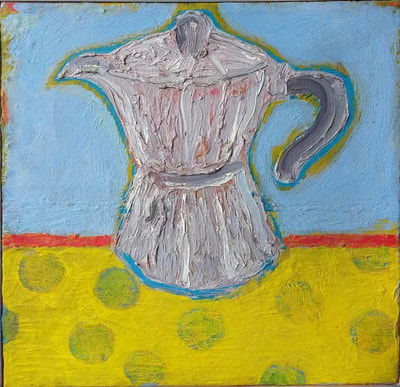


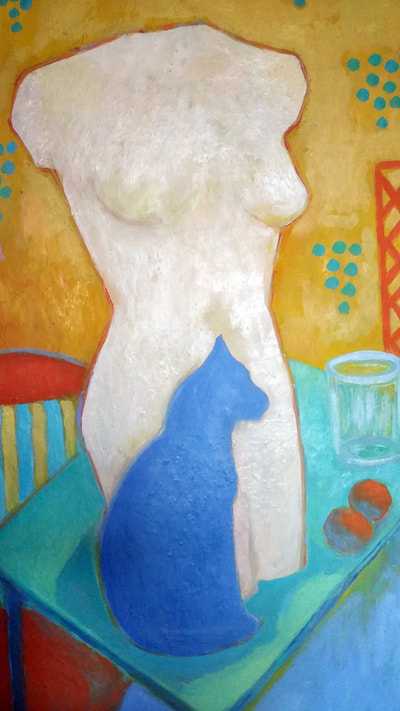














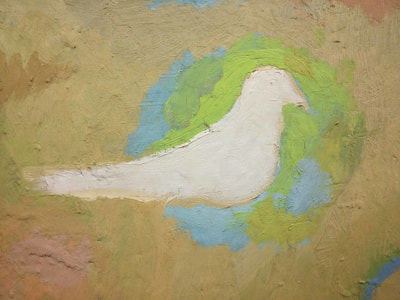


 RSS Feed
RSS Feed